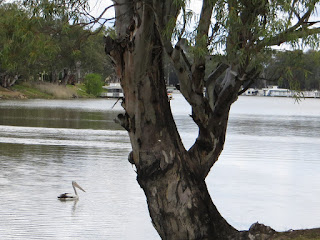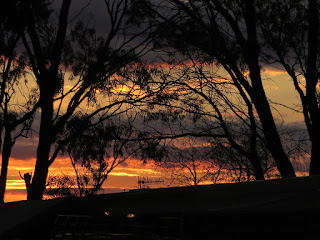About the Author
What if high schools and colleges helped students create a nature-rich future, helped them become outdoor entrepreneurs? By that, I don’t mean careers devoted only to energy efficiency. That’s important, but there’s a whole new category of green jobs coming and some of them are already here — nature-smart jobs.These careers and avocations will help children and adults become happier, healthier and smarter, by truly greening where people live, work, learn and play.
Here are some exciting careers that you – and your kids – may never have considered:1. Nature-smart workplace architect or designer. Studies of workplaces that have been created or retrofitted through biophilic (love of nature) design show improved product quality, customer satisfaction and innovation. Successful models include the Herman Miller headquarters building, designed for abundant natural light, indoor plants, and outdoor views, including views of a restored wetlands and prairie on company grounds. After moving into the building, 75 percent of day-shift office workers said they considered the building healthier and 38 percent said their job satisfaction had improved.
2. Restorative employee health and productivity specialist. To reduce employee stress and boost morale, companies such as Google, Yahoo, and Sunset magazine promote on-site organic vegetable gardens. The company Airbus now uses wilderness retreats as a reflective catalyst for leadership training. At least one company offers weeklong nature camps for adults who need to recharge their physical, emotional and intellectual batteries.
3. Nature-smart residential builder. They’ll specialize in window-appeal (the view of nature from inside the home) — not just curb appeal. They’ll know how to place a new house in sync with the sun’s movements, use local materials to reflect the nature and history of the region, install a super-insulated green roof that can last 80 years, design for natural air-conditioning, and weave nature in homes and offices in even the most crowded urban neighborhoods.
4. Nature-smart yard and garden specialist, who will help homeowners and businesses reduce traditional lawns, and replace them with bird-attracting native vegetation, butterfly gardens, chlorine-free natural swimming ponds, organic vegetable gardens, beehives, places to raise chickens and ducks and gather eggs. As local governments continue to loosen regulations on yard farming, and as nearby production of food becomes more important, this specialty will become more popular.
5. Urban wildscaper. Urban designers, landscape architects, and other professionals who develop or redevelop neighborhoods that connect people to nature through the creation of biophilically-designed buildings and preservation of natural land will be increasingly in demand. They will design and establish biodiverse parks, urban forests and community gardens, wildlife corridors and other wild lands. Seattle recently announced plans for a massive urban forest that will produce free food. Wildscapers will also manage wildlife populations.
6. Outside-In decorator, who will bring the outside in, creating or improving our homes to nurture health and well-being through nature: “living walls” of vegetation that purify air; indoor vertical vegetable gardens with automatic drip-irrigation systems; biophilic decorations such as twig furniture; fluorescent lights that adjust throughout the day via light sensors at the windows; bird-warning elements for windows; indoor water gardens and other living features. So will individual homeowners decorating their own homes. This goes way beyond Feng Shui.
7. New Agrarian. Who’s that? Urban farmers who design and operate community gardens. Designers and operators of vertical farms in high-rise buildings. Organic farmers and innovative vanguard ranchers who use sophisticated organic practices to produce food. The focus is on local, family-scale sustainable food, fiber, and fuel production in, near, and beyond cities.
8. Health care provider who prescribes nature. Ecopsychologists, wilderness therapy professionals, are going mainstream. Some pediatricians are now prescribing or recommending “green exercise” in parks and other natural settings to their young patients and their families. Hospitals, mental health centers, and nursing home are creating healing gardens. The Portland, Oregon parks department partners with physicians who send families to local parks, where park rangers serve as health para-profesionals. In the U.K., a growing “green care” movement encourages therapeutic horticulture, ecotherapy, and green care farming.
9. Green exercise trainer. Exercising indoors and outdoors seems to produce different results. Even when the same number of calories are burned. Outside exercise appears to have better results, especially for psychological well-being. Green exercise trainers can help individuals and families individually or by organizing “green gyms” and family nature clubs. “People walkers” can help the elderly take a hike.
10. Natural teacher. As parents and educators learn
more about the brain-stimulating power of learning in natural settings,
demand will increase for nature-based schools and nature-based
experiential learning, providing new opportunities for natural teachers
and natural playscape and school garden designers. Librarians can be natural teachers, too, creating bioregional “naturebraries.”
11. Bioregional guide. We’ll see the emergence of the citizen naturalist who, as professionals or volunteers, help people get to know where they live. One organization, Exploring a Sense of Place in the San Francisco Bay Area, guides groups that want to have a deeper understanding of the life surrounding them. Think of these guides as nature-smart Welcome Wagons who help us develop a deeper sense of personal and local identity.
Richard Louv is chairman emeritus of The Children and Nature Network and the author of “THE NATURE PRINCIPLE: Reconnecting with Life in a Virtual Age,” from which this piece is adapted, and “LAST CHILD IN THE WOODS: Saving Our Children from Nature-Deficit Disorder.” This column was first published in April, 2012.
Follow Richard Louv on Facebook and @RichLouv on Twitter
More Reading and Resources
The Nature-Rich Career: How a Child’s Outdoor Experiences Helped Shape a Young Woman’s Future
It’s Time to Redefine Green Jobs: Thoughts Following the First-Ever White House Summit on Environmental Education: Richard Louv
The Hybrid Mind: The More High-Tech Schools Become, the More Nature They Need
Don’t Tear Down that Fort: Ten Lessons (and more) that Kids Learn from Building Their Own Tree Houses and Forts — if Adults Let Them
Hope by Design: Five Great Examples of Nature-Rich Places
A New Role for Landscape Architecture: Robin Moore
Forward to Nature: The new Nature Movement Isn’t About Going Back to Nature, but Forward to a Nature-Rich Civilization
What If We Truly Greened America?
11. Bioregional guide. We’ll see the emergence of the citizen naturalist who, as professionals or volunteers, help people get to know where they live. One organization, Exploring a Sense of Place in the San Francisco Bay Area, guides groups that want to have a deeper understanding of the life surrounding them. Think of these guides as nature-smart Welcome Wagons who help us develop a deeper sense of personal and local identity.
The list of possible careers can go on. Stream restorers, law-enforcement officials who use nature for crime prevention and improved prison recidivism, specialists in nature-based geriatric services.See more examples in the comments below. Once the entrepreneurial spirit kicks in, it’s easy to start thinking of new products and services. And when people begin to consider the career possibilities of human restoration through nature, their eyes light up: here is a positive, hopeful view of the human relationship with the Earth, a way to make a living and a life.
Richard Louv is chairman emeritus of The Children and Nature Network and the author of “THE NATURE PRINCIPLE: Reconnecting with Life in a Virtual Age,” from which this piece is adapted, and “LAST CHILD IN THE WOODS: Saving Our Children from Nature-Deficit Disorder.” This column was first published in April, 2012.
Follow Richard Louv on Facebook and @RichLouv on Twitter
More Reading and Resources
The Nature-Rich Career: How a Child’s Outdoor Experiences Helped Shape a Young Woman’s Future
It’s Time to Redefine Green Jobs: Thoughts Following the First-Ever White House Summit on Environmental Education: Richard Louv
The Hybrid Mind: The More High-Tech Schools Become, the More Nature They Need
Don’t Tear Down that Fort: Ten Lessons (and more) that Kids Learn from Building Their Own Tree Houses and Forts — if Adults Let Them
Hope by Design: Five Great Examples of Nature-Rich Places
A New Role for Landscape Architecture: Robin Moore
Forward to Nature: The new Nature Movement Isn’t About Going Back to Nature, but Forward to a Nature-Rich Civilization
What If We Truly Greened America?


























